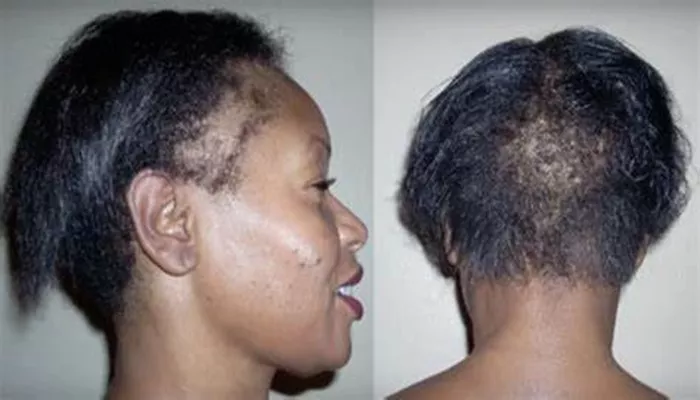Thinning hair is a common concern that affects millions of people worldwide, regardless of age or gender. Whether due to genetics, aging, hormonal changes, or lifestyle factors, losing hair can be distressing and impact self-confidence. The big question many ask is: Can thinning hair grow back? The answer isn’t a simple yes or no—it depends on the underlying cause, the extent of hair loss, and the steps taken to address it.
Understanding the Causes of Thinning Hair
Before exploring whether thinning hair can regrow, it’s essential to understand why hair thins in the first place. Hair loss can stem from multiple factors, some temporary and others permanent.
Genetics and Androgenetic Alopecia
The most common cause of hair thinning is androgenetic alopecia, also known as male or female pattern baldness. This hereditary condition is driven by hormones, particularly dihydrotestosterone (DHT), which shrinks hair follicles over time, leading to finer, shorter strands until growth eventually stops. In men, this often results in a receding hairline or bald spot, while women typically experience diffuse thinning across the scalp.
Hormonal Changes
Hormonal fluctuations play a significant role in hair health. Pregnancy, menopause, thyroid disorders, and conditions like polycystic ovary syndrome (PCOS) can trigger hair shedding. Postpartum hair loss, for example, is temporary and usually resolves within a year, whereas thyroid imbalances may require medical intervention to restore hair growth.
Nutritional Deficiencies
Hair follicles need proper nutrition to function optimally. Deficiencies in iron, zinc, vitamin D, B vitamins (especially biotin), and protein can lead to excessive shedding and slower regrowth. Crash diets, eating disorders, and malabsorption issues (such as celiac disease) can contribute to thinning hair.
Stress and Telogen Effluvium
Physical or emotional stress can push hair follicles into a resting phase called telogen effluvium, leading to noticeable shedding months after the stressful event. This type of hair loss is usually temporary, but chronic stress may prolong recovery.
Medical Conditions and Medications
Autoimmune diseases like alopecia areata cause patchy hair loss, while scalp infections (e.g., ringworm) can damage follicles if untreated. Additionally, certain medications—such as chemotherapy drugs, blood thinners, and some antidepressants—list hair loss as a side effect.
Aging and Reduced Follicle Activity
As we age, hair growth naturally slows. Follicles produce thinner, weaker strands, and some may stop generating hair altogether. While this is a normal part of aging, some treatments can help maintain existing hair density.
Can Thinning Hair Regrow?
The possibility of regrowing thinning hair depends largely on the cause and how early intervention begins.
Reversible Hair Loss
Conditions like telogen effluvium, nutritional deficiencies, and certain hormonal imbalances often see hair regrowth once the underlying issue is resolved. For example, correcting an iron deficiency or managing thyroid levels can restore hair growth within months. Similarly, stress-induced shedding typically reverses once stress is managed.
Partially Reversible Hair Loss
Androgenetic alopecia is progressive, but early treatment can slow or partially reverse thinning. Medications like minoxidil (Rogaine) and finasteride (Propecia) have been clinically proven to stimulate regrowth in many individuals. However, results vary, and discontinuation often leads to renewed hair loss.
Permanent Hair Loss
In cases where follicles have been dormant for years (as in advanced androgenetic alopecia) or destroyed by scarring alopecia, regrowth is unlikely without surgical intervention like hair transplants.
Effective Treatments for Thinning Hair
If your hair loss is reversible or in its early stages, several treatments can help restore thickness.
Medications
- Minoxidil (Rogaine): An over-the-counter topical treatment that prolongs the hair growth phase. It works for both men and women but requires consistent use.
- Finasteride (Propecia): A prescription pill for men that blocks DHT. It’s more effective for preventing further loss than regrowing hair.
- Spironolactone: Used off-label for women with hormonal hair loss, this anti-androgen can reduce thinning caused by excess DHT.
Nutritional Adjustments
A diet rich in protein, iron, omega-3s, and vitamins A, C, D, and E supports hair health. Supplements like biotin, collagen, and zinc may help if deficiencies exist, but excessive intake can sometimes worsen hair loss.
Low-Level Laser Therapy (LLLT)
Devices like laser combs or caps use red light to stimulate follicle activity. Studies show mixed results, but some users report improved thickness over time.
Platelet-Rich Plasma (PRP) Therapy
This involves injecting concentrated platelets from your blood into the scalp to promote healing and hair growth. PRP shows promise, particularly for early-stage androgenetic alopecia.
Hair Transplant Surgery
For permanent hair loss, follicular unit transplantation (FUT) or follicular unit extraction (FUE) can relocate healthy follicles to thinning areas. Results are natural-looking but require recovery time and financial investment.
Lifestyle Changes to Support Hair Regrowth
Beyond medical treatments, daily habits influence hair health.
Scalp Care
A clean, well-circulated scalp fosters growth. Gentle massages increase blood flow, while avoiding harsh chemicals prevents further damage.
Stress Management
Yoga, meditation, and regular exercise can reduce cortisol levels, minimizing stress-related shedding.
Avoiding Damage
Heat styling, tight hairstyles (like ponytails or braids), and excessive brushing weaken hair. Opt for protective styles and sulfate-free products.
The Psychological Impact of Thinning Hair
Hair loss isn’t just a physical issue—it affects mental well-being. Many people experience anxiety, depression, or social withdrawal. Seeking support from counselors or support groups can be just as important as medical treatment.
Conclusion
While not all thinning hair can be fully restored, many cases respond well to early intervention. The key is identifying the cause and committing to a tailored treatment plan. Whether through medications, lifestyle changes, or advanced therapies, regaining thicker hair is possible for many. If you’re concerned about hair loss, consulting a dermatologist or trichologist ensures personalized guidance for your unique situation.
Remember, hair growth is a slow process—patience and consistency are essential. Even if full regrowth isn’t achievable, embracing thinning hair with confidence is equally empowering. With the right approach, you can take control of your hair health and feel your best.
Relaetd Topics:
What Is the Best Remedy for Falling Hair?
Can Hair Grow Back from Alopecia?
What to Do for Hair Loss Due to Medication?


